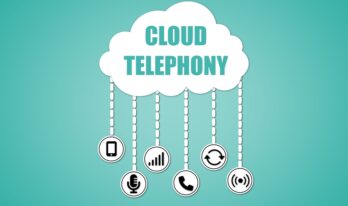A Log can be defined as a file, usually generated every time certain events occur in the system.
Log files record almost everything happening within operating systems or software.
Log management system involves taking care of every event log generated by applications, from their collection to storage and disposal.
Let’s discuss some of the best steps that will assist users in better logging and monitoring.
14 Log Management Best Practices
- Setting Your Goal Clear
- Give priority to the logs Critical for Business
- Know The Compatibility of your Log Data
- Centralized Collection of Your Logs
- Invest in Automation
- Keep a Unified Structure for All Logs
- Compressing Log Data
- Keep a Check on Regulations and Compliances
- Implement End-to-End Logging
- Identifying Data Sources
- Integrating Log Management with Existing Resources
- Ability to Differentiate among different Log Levels
- Maintain Regularity in Log Maintenance
- Empowering Your Team
Like any other essential tasks in the day-to-day business requires proper planning, Similarly, setting up better log management process needs to be implemented with the right plan.
Users need to be sure as to what value they want to derive by implementing log management.
While developing a logging plan, consider the tools and methods for logging and consider what particular set of information you are looking for.
Users need to remember that with every event being created, log data grows in very large volumes.
This might create storage issues for the users.
It will be in the user's best interest to prioritize the logs that are critical for business functioning.
Usually, such logs will consist of data related to security, troubleshooting, and compliance.
Also Read: Top 11 Network Configuration Management Tools
Application logs store data for two types of audiences, humans, and machines.
Machines are compatible in dealing with extensive data, and humans are quite the opposite of it meaning they can’t process large volumes of data quickly and deal with unstructured data.
To better process your logs, it is advised to keep your logs both readable for humans as well as machines.
Collection of logs is done to analyze it later.
But with an enormous amount of services and applications that a user is engaged with, drives large volumes of data.
It will be easier for any user to analyze their logs if collected and stored at a centralized location.
Tools like SolarWind, Splunk, etc., will help you collect the log data from sources like a mobile, router, etc., and present them into readable formats.
Automation will make responding to log events or alerts a lot easier.
Users can invest their valuable time in other priority tasks while leaving the log to attend to automation.
Alerts from logs usually consist of security alerts or bugs.
To efficiently manage your log data better, it is advisable to the users that a uniform structure should be applied for log management.
A structure like each log line containing an event's time, logger's name, process id, or event id.
To avoid any further misunderstanding, do add a unique ID for every logline.
Such formats will make it easier to analyze log data and record every information associated with such data.
If you are looking for budget solutions, users should then go for compressed data.
This will save not only the storage costs but also the network transfer fee for processing data.
Modern tools are quite capable of searching every type of data within the system.
Before opting for any log management process, users should properly check the security policies with their technical or IT teams.
Do take into consideration the data laws like GDPR.
Not checking into these laws and policies might attract a hefty penalty and give users a financial burden.
At times there will be complexities related to the application system.
To overcome this, users need to monitor and log every system component.
Many users think logging is only limited to monitoring logs through Windows logs or server logs, but it's more than that.
With End-to-End logging, users will have a complete understanding of their systems from an end-user’s point of view.
Through this, they will understand various other parameters of their system, like latency, delays, or page load times.
It ultimately adds to a better user experience.
Many times, the application log information may record errors.
With correlation at your hand, users will be able to know the exact cause of the malfunctions.
Through this user will be able to rectify the error before allowing it to reach the end-user.
It is always in users' best interest to integrate their logging solutions with monitoring tools.
If logs could show the root issue of the problems, having an active monitoring solution will provide you a better picture of your system's overall health.
Different log events bring different conclusions.
Because of this, users achieve the benefit of differentiating between regular and irregular events.
Lower intensity issues can be further taken into consideration, wherein they can be used for application behaviors.
Users should regularly review and maintain system logs.
Proper formatting and structuring assist in the easy understanding of logs.
Log maintenance gives users information about proper utilization of storage being used, important logs are being paid attention to, etc.
Refrain from limiting the benefits of log data only to a highly technical team.
Opt for the logging tool that provides benefits like real-time alerting, data visualization for data scientists, and filter capabilities.
This will help your team derive the best version of information from collected logs and provide a better view of your data.
Conclusion:
With the growing use and discovery of applications today, logging solutions are much needed and should be properly implemented. Above mentioned steps will guide you to the proper implementation of log management in your organization.
Also Read: What is the Importance of Data Management in Different Organizations?




